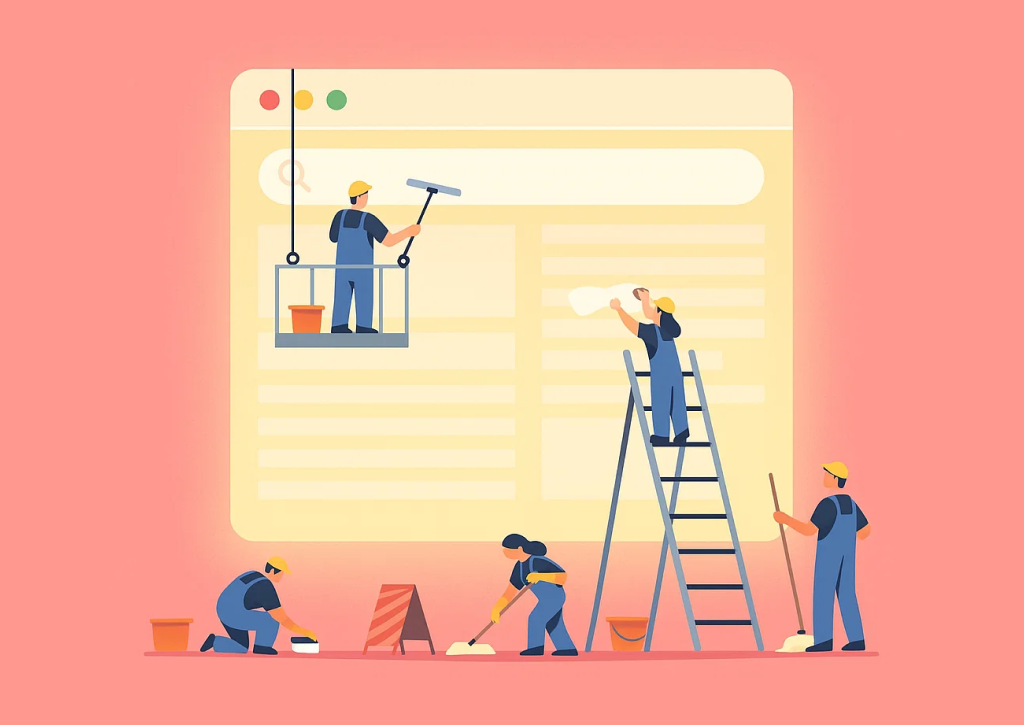Start-ups often thrive on speed. Founders sketch out a product idea, open their laptops, and start building with whatever tools are at hand. In recent years this style has gained a catchy name: vibe coding. It is a way of producing software quickly, riding intuition and AI-assisted coding rather than careful planning. For a prototype or early proof of concept, vibe coding works beautifully. Features appear overnight, users can test ideas almost immediately, and the team can show investors something tangible.
The trouble comes later. What once felt nimble starts to buckle as more users arrive, new developers join, or compliance requirements loom. What looked like a promising shortcut turns into a fragile structure. At this stage more and more companies are calling in what some now describe as a code cleanup team: specialists whose sole focus is to stabilise, restructure, and prepare the codebase for genuine growth.
At a Glance

Why Vibe Coding Leaves a Mess
The strengths of vibe coding are also its weaknesses. By moving fast, teams skip documentation, sidestep testing, and ignore architecture choices that would normally protect a system in the long run. Articles in Forbes have described the same pattern: projects that race ahead in their first months later collapse under the weight of technical debt. Small changes trigger unexpected defects, new engineers take weeks to make sense of the logic, and performance issues appear once the user base expands.
This is not negligence. It is simply the natural outcome of prioritising speed over structure. The danger is that without a deliberate reset, the quick wins of vibe coding become a trap, locking the company into ever-slower development.
The Job of a Cleanup Team
A cleanup team is not there to invent new features. Their mission is to make the existing product sustainable. They begin with an audit: examining the architecture, mapping dependencies, checking for gaps in test coverage, and identifying modules most likely to fail. They then draw up a plan, separating what is urgent from what can safely wait.
The real work lies in refactoring and stabilisation. Code is broken down into cleaner modules, naming is made consistent, outdated libraries are replaced. At the same time the team adds safety nets: unit and integration tests, continuous integration pipelines, monitoring and logging. Finally they leave behind something vibe coding rarely provides—documentation and coding standards—so that future hires can contribute without months of guesswork.
Examples From the Field
Although few start-ups publicly admit to needing rescue, several firms have begun offering exactly this service. Software Planet Group markets “vibe coding rescue” packages, promising to audit, refactor, and add missing infrastructure. We warn that vibe coding feels fast but inevitably “breaks under pressure”, and highlights how lack of test coverage and performance bottlenecks show up just as the business needs to scale. Even Forbes has profiled companies forced to rebuild their AI-generated prototypes once real customers arrived.
The common theme is that no matter how brilliant the product idea, if the underlying code is left in its vibe-coded state, scaling becomes painfully slow and costly.
Knowing When to Act
Founders often ask when it is the right time to bring in a cleanup team. There are a few tell-tale signs. If development velocity is dropping, if onboarding new engineers takes weeks rather than days, or if defects appear after even minor updates, the problem is no longer theoretical. Another signal is looming compliance or performance targets: entering new markets, handling sensitive data, or serving larger volumes of users. Waiting too long can mean that instead of incremental cleanup, a full rewrite becomes unavoidable.
Striking the Balance
There are, of course, trade-offs. Every hour spent cleaning up is an hour not spent releasing new features. Some founders resist, worried about losing momentum. The key is balance. A cleanup does not aim for perfection. It aims for “good enough”—a state where the system is stable, predictable, and safe, yet still flexible for future change.
Experienced teams often start small, fixing one critical module to prove the value. They measure the impact—fewer defects, faster deployments, quicker onboarding—and then expand the effort. In time the company learns to maintain discipline: code reviews, pair programming, technical debt sprints. Vibe coding may have built the foundation, but cleanup work secures the house.
From Prototype to Product
Vibe coding is not a mistake. It is often the smartest way to get an idea off the ground. But surviving past the prototype demands a shift in mindset. What many start-ups are discovering is that calling in a dedicated cleanup team is not a luxury but a necessity. By auditing, stabilising, and documenting, they transform fragile prototypes into products capable of growth.
If you recognise yourself in this picture—you managed to bring a prototype to real users with astonishing speed and proved its viability—now is the right moment to think about keeping that same pace through a reworked codebase. After all, we take on debt, in this case technical debt, precisely to buy what we could not otherwise afford. The time to repay has come, and the wisest course is to do so with the support of a qualified partner who can ensure your product continues to move forward without slowing down.

